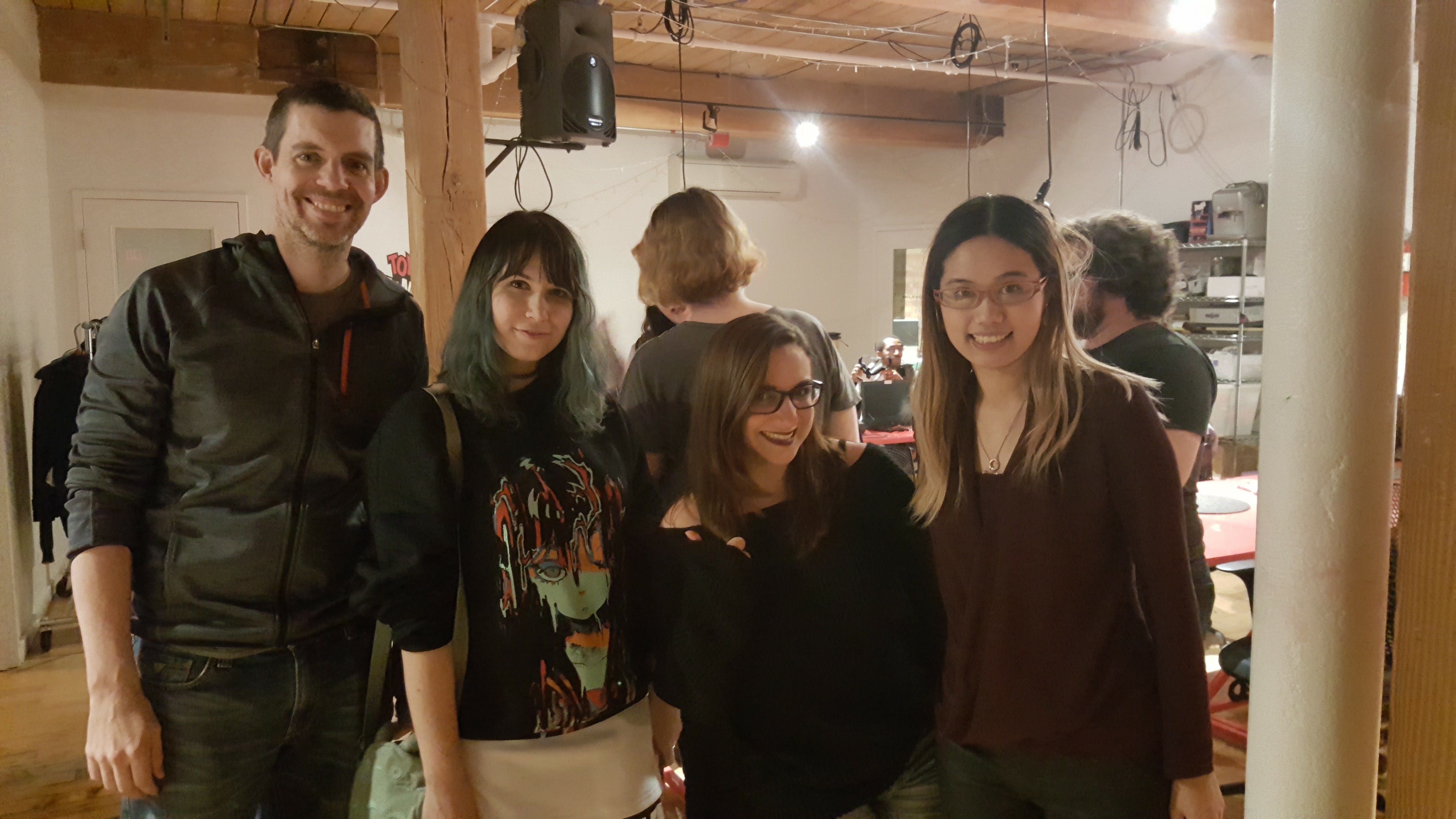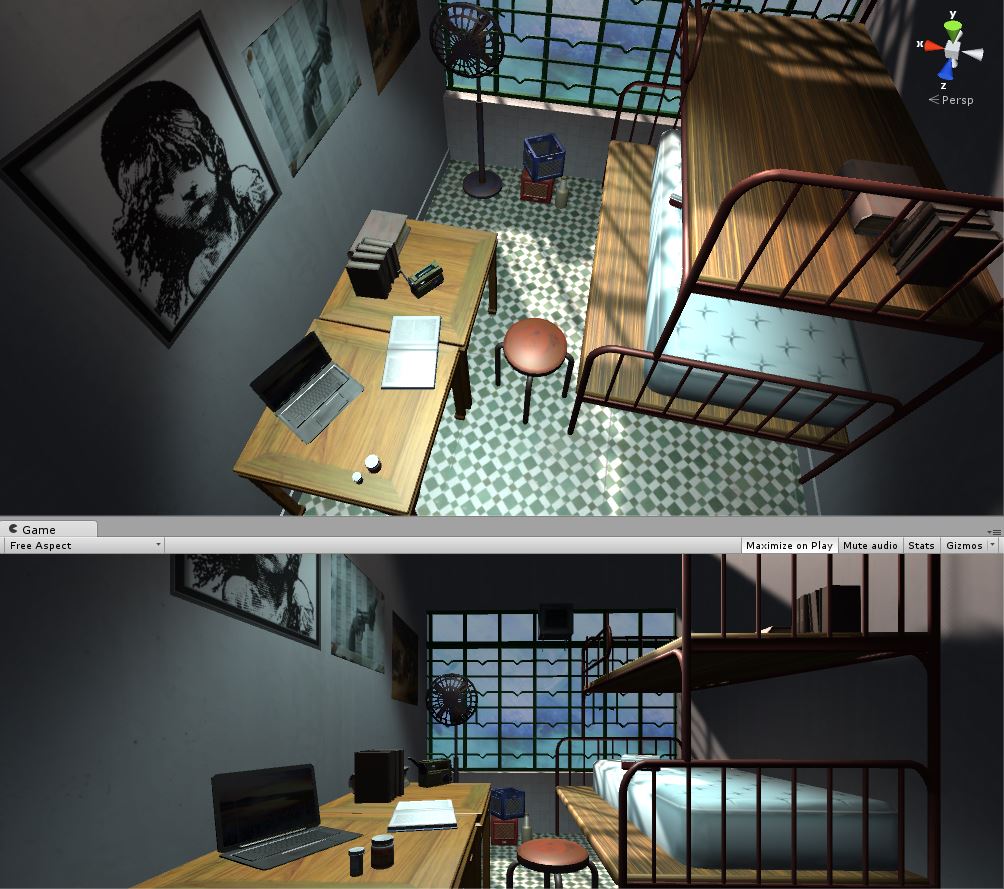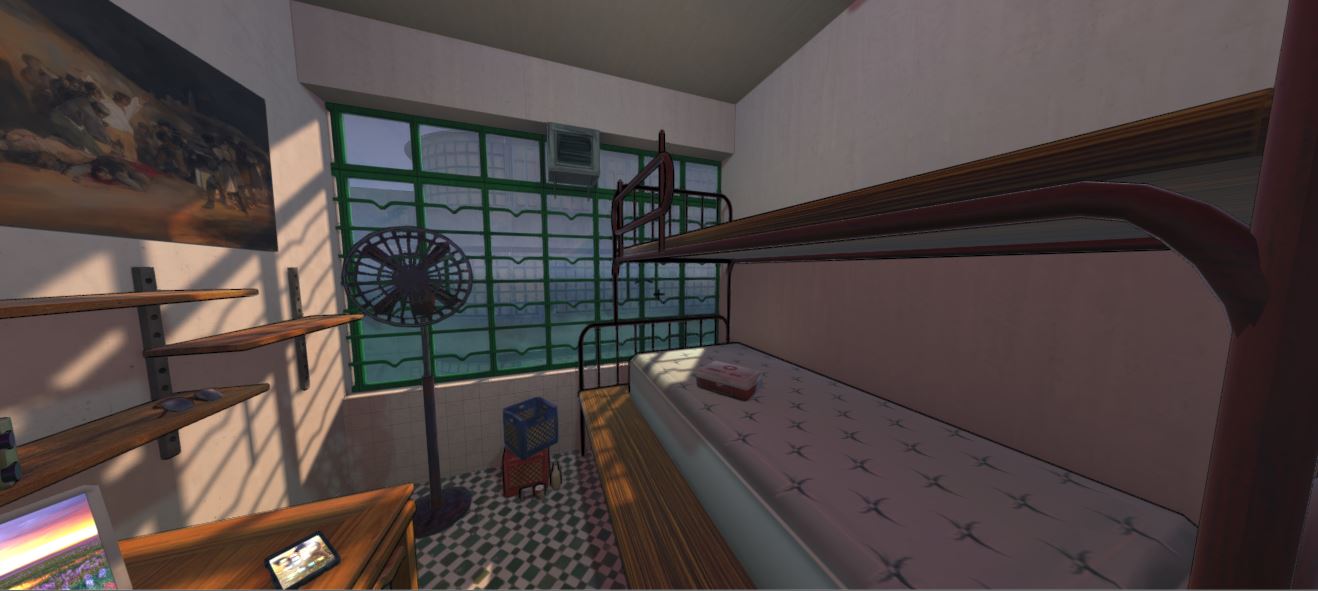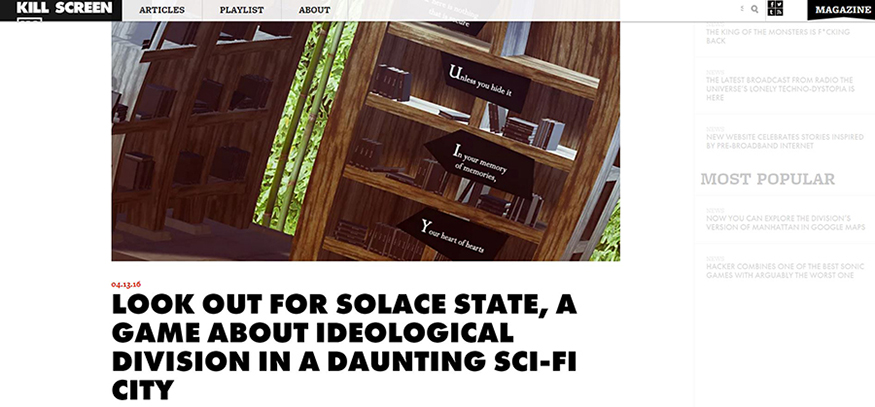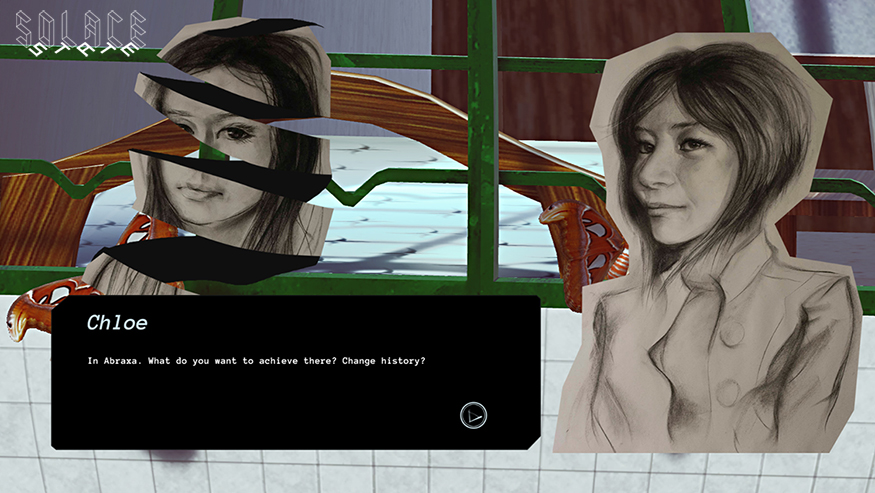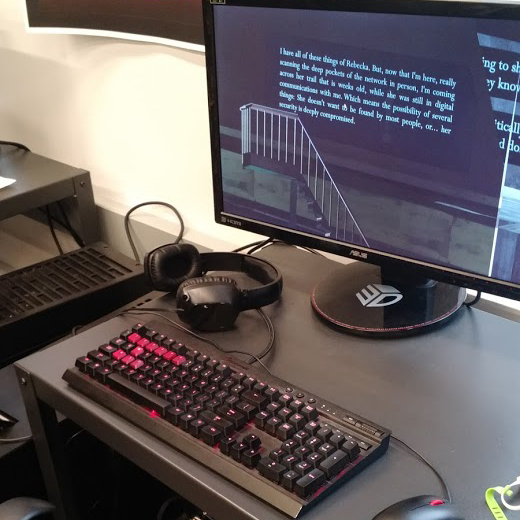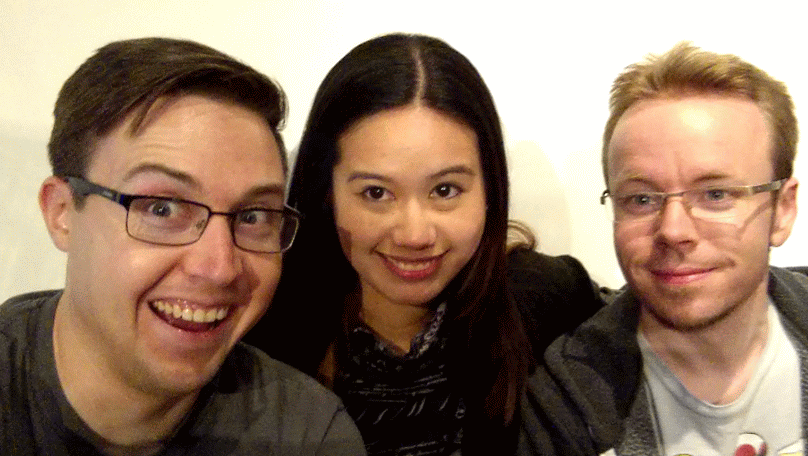This post has been a long time in coming! My game dev and related work have been thriving. It’s been quite an adventure in December and January: I had a great time showcasing the first build at the Canadian Video Game Awards with Bit Bazaar, and I continued working on some build ideas for Solace State. I took some time off during the winter holidays to relax with family and friends, managed to catch a cold, started writing some short stories, and began a new teaching job at university in intro to 3D game arts. I also started networking a bit more to see if there are any local collaborators who can help me with character art, localization and programming.
On Dec 5th and 6th, Solace State had its first outing with Bit Bazaar and the Canadian Video Game Awards Fanfest. Surprisingly, the vast majority people played through a 20-30 minute gameplay demo, which was beyond my expectations. I had set up the demo so that people can skip between scenes and levels if they wish, and practically no one took me up on that offer (unless they were manning a booth and had to run back to their responsibilities).
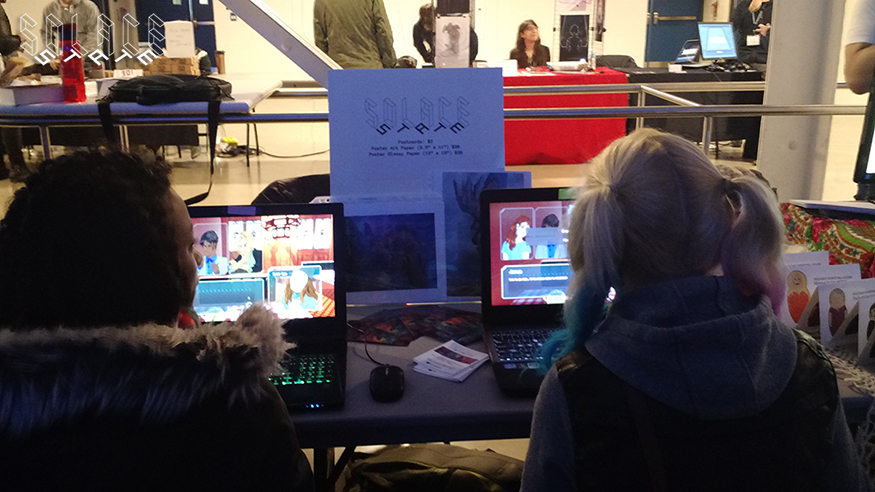
There were many experienced devs who shared their insight and feedback to me, and is it ever so valuable! Many people enjoyed the main game mechanic, namely the “hacking-scrolling text environment”. Most people seem to enjoy that part of the gameplay more than the straight-forward visual novel mode, and have asked if that part can be longer. They also “get” it right away as long as they know which keys to press (arrows or WASD), which means that it’s only been my communication about it on devlogs and social media without gameplay input that has been the real problem.
Second, the constructive critique of primarily other gamedev community members have helped me re-scope. A lot of the times, what I see as less-than-ideal in the game are also highlighted by fellow devs. It seems that I’m not far off the mark with my own self-assessment.

On Writing
As much as I’ve been writing in some academic or professional capacity for about 9 years, writing for a visual novel game is a different beast from all the creative writing that I’ve hitherto completed. I tend to write much more like a novelist than a typical comic book, where a lot of the key identifiers of the protagonist is clear on the first page. Of course, there can be twists and back-stories down the road, but nonetheless, key motivations are already set up in the first ten, fifteen minutes. Solace State doesn’t quite have that. That’s not necessarily game-breaking, as narrative-driven games like Gone Home and arguably Dear Esther has created a much more gradual reveal of their characters’ vivid colours and internal contradictions. But I do need to balance between what I save for later, and what I reveal in the first ten minutes of the game.
On the flip side of the coin, I also have to remind myself to keep conversations and scenes to be more organic, and less utilitarian to the greater arc of the plot. Without a doubt, there should never be “filler material”. But, I also strive to describe those moments and beats that reveal something intrinsic about the characters and how they feel to each other, what they mean to each other. It’s these little moments where relationships can be built, and can fall apart.
What’s interesting, of course, is that games are becoming more of something that doesn’t get consumed in one sitting, whereas plays and films are. The middle ground to all of this is to emulate some inspirations from television drama, which takes a more episodic approach to its narrative arc. At least, this is the way that I have framed it, and it has helped me acknowledge which scenes may have too much detail, and others not enough screen time to develop the right emotional beats.
Again, it’s worlds different from writing an article or novella; My usual playgrounds, where a single line can leave one breathless with its impact.

On Art
There’s a few people who have pointed out the incongruity of the semi-cartoony character art with the rest of the universe, including the 3D environment and the tone of the writing. I happen to agree with them.
There are a few approaches that I would like to try out:
- Realistic-styled graphite pencil or ink sketches in black & white , which I am capable of producing myself, but can take half a day for a single expression
- A digital painting in lino-block style in black & white, which I or another artist can produce, and doesn’t take as long as the graphite pencil sketches. This would be in a similar style to what’s already produced in the mood trailer from Feb 2015
- Collaborate with photographers and a lot of modeling talent. This requires a lot of upfront collaboration and is highly reliant on what kind of new faces and talents I can find. I’ve started making some inquiries into this. It may be the most expensive, but may also be the one that creates the nicest effect, giving the game a semi-mockumentary feel. It might also cost me less time (see prototype below)

People seem to love wandering through the 3D environment as a purely artistic experience though, so I’m not going to change anything there. Just going to add more content!
On Design
With some feedback, I’ve decided to do a prototype of hack scenes that are more primary, cutting out the traditional dialogue format and UI typical to visual novels. There should be textual puzzles that must be solved within its bounds, as well as clickable objects to reveal more narration and dialogue. This is to ensure that the requisite narrative dialogue is met. Each scene should have an intertitle explaining Chloe’s goals, in her own words, so that the player knows what to expect in terms of narrative goals and broader trajectory.
In practical terms of the intertitles, the textual puzzles, and the clickable objects, it means that I should maintain a key plotline by consistently (re)defining where Chloe might find Rebecka with new sources of information. When we start off, we discover gradually who Rebecka’s last contacts are.
On Programming
Key stuff on the to-do list: Upgrade from 5.2.4 to 5.3.x; Create Save and Load variables; Create a history log for dialogue; Create a variable mini-encyclopedia for all characters and places as they populate in the narrative; Improve on the pause screen.






